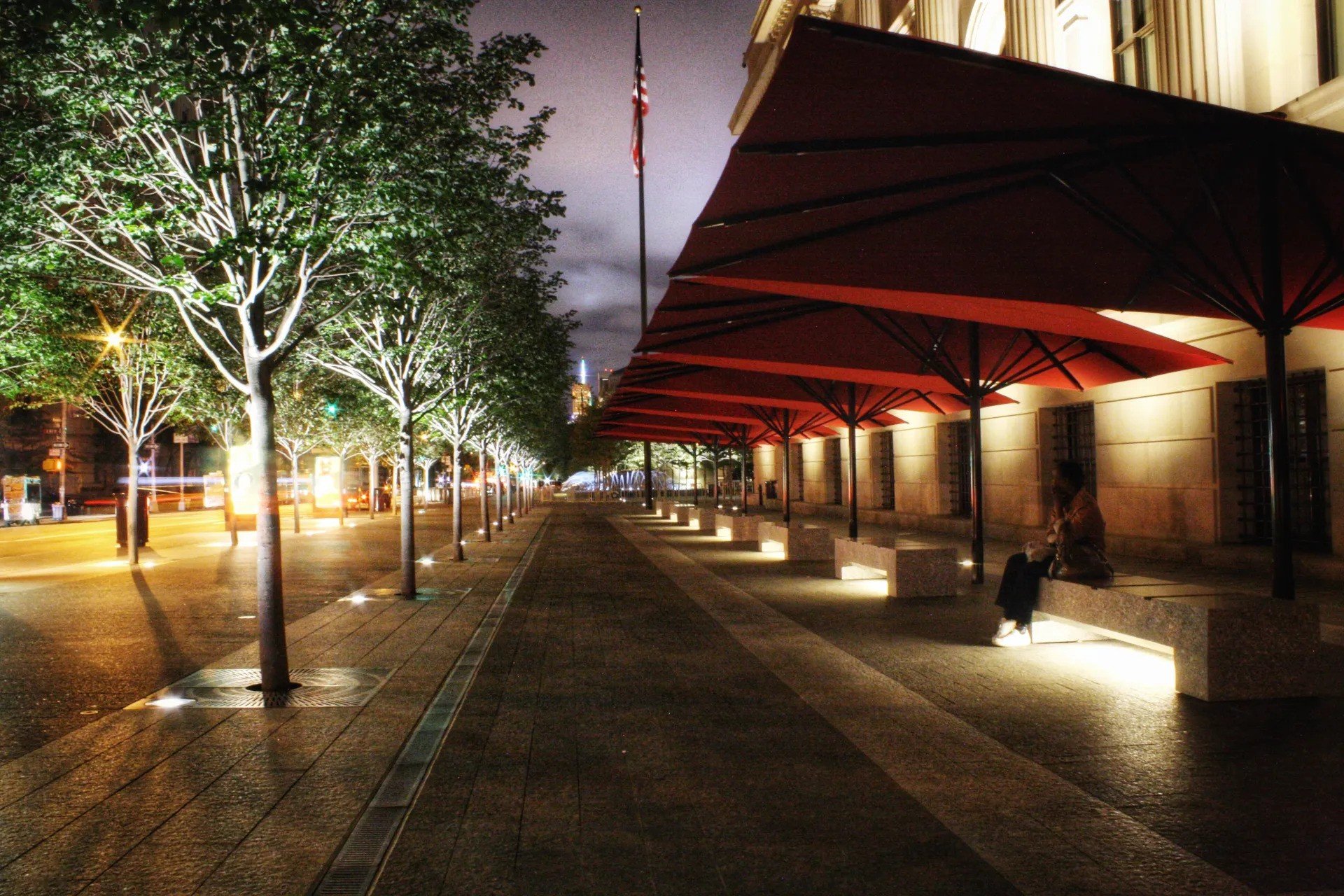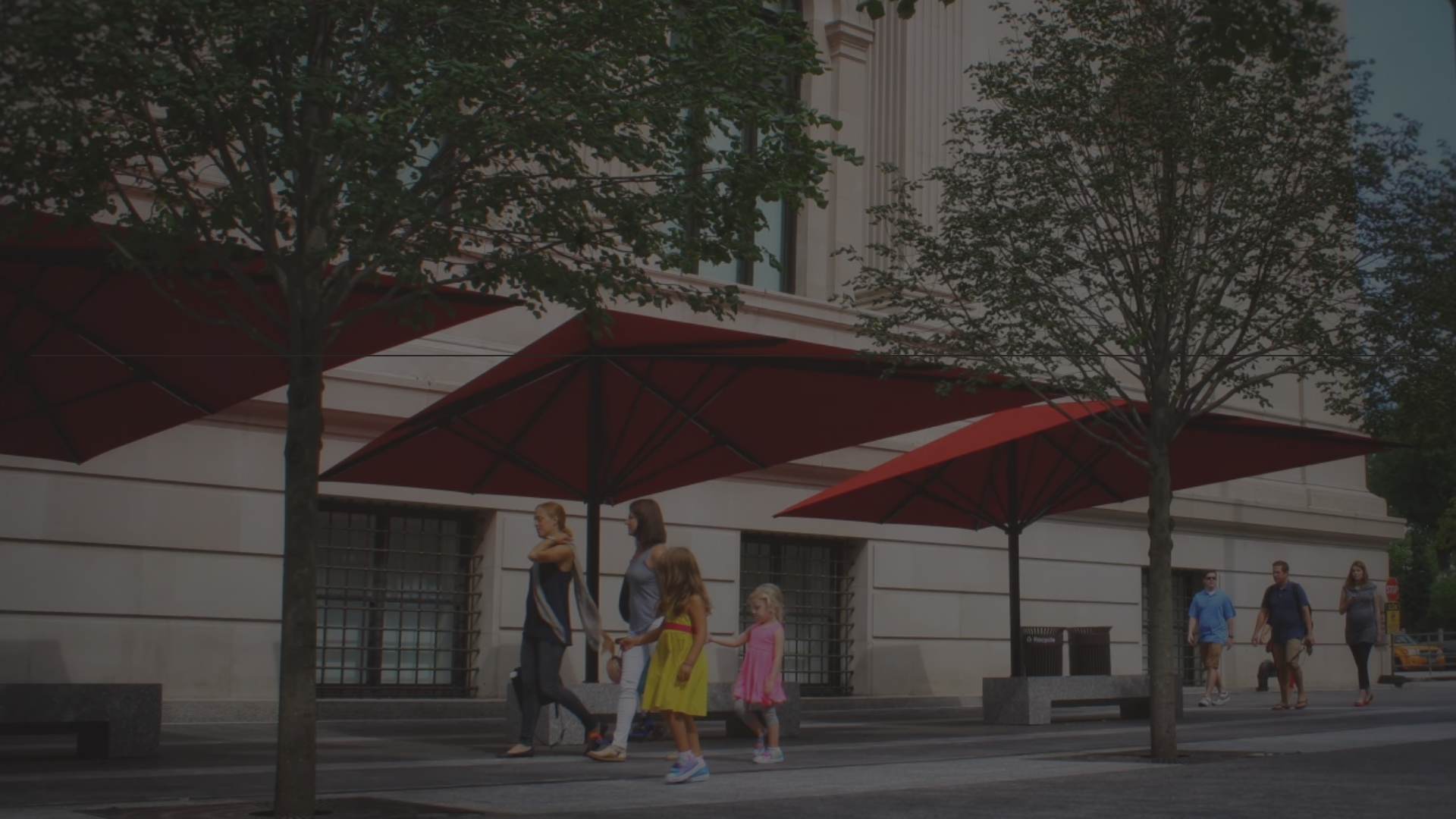
The Metropolitan Umbrellas
Building a brand from the ground up
This is my independent study, a 5-month long capstone project for a live client. Each student is tasked with finding their client and working with them to solve a brand problem.
I partnered with The Metropolitan, not the museum. The outdoor umbrellas outside of it.
Background
In 2014, my client, architect Peter Culley, designed the Metropolitan umbrellas specifically for the MET Museum. Seven of them line each side of the building and have remained there ever since. Over a decade later, Peter asked me to help him figure out how to sell more of these umbrellas to commercial clients.
Situation
When started the project, the Metropolitan umbrella existed only as a product within Peter's architecture portfolio. It had no brand and no story.
My challenge
The luxury outdoor umbrella market is a niche space with a few well-established players, each with a clear identity. Peter’s product had cultural presence, people recognized the “red umbrellas outside the MET”, but no one knew the brand behind them.
Turning that recognition into commercial value required defining the brand first.
This project meant diving into a space I knew nothing about.
I had to quickly get up to speed: Who are the decision-makers in this category? Are they hotel and restaurant owners, designers, or procurement teams?
What are other brands doing to stand out? And how does this process actually work in a B2B environment?
What I did to figure it out
A deep dive into:
Market conditions, consumer sentiment on outdoor furniture (MRI Simmons), industry reports
Comprehensive competitive analysis
20, one-hour long in-depth interviews with hotel managers, interior designers, competitors, architects, furniture deals
Key Learnings
1
Competitors have built functional credibility. But nobody has built cultural or emotional desire.
I found that most existing brands in the category focus their messaging around performance, durability, and materials. While those are important B2B considerations, they make outdoor umbrellas feel like spec sheet items.
2
Adjacent categories, like lighting, are evolving beyond pure function.
Apparatus is a great example. Instead of highlighting materials like stainless steel or bolts, they position themselves as a brand exploring the relationship between lighting, furniture, and space.
Their showrooms feel more like curated art galleries than retail spaces, and rather than showing up at traditional trade shows, they host events where their lamps are the main characters.
3
Our target is not hotels and restaurants directly. It’s the middle men.
The plot twist in my research was realizing that it’s actually not the hotels or restaurants that we should be targeting directly. The real decision-makers are the people in the middle - the designers, architects, and procurement firms who source furniture and outdoor elements for hospitality spaces. Winning them over is key.
“As a hotel, we typically work with designers who handle everything from interiors to exteriors. Right now, we rely on two interior firms, so we often discover brands through them.”
- Manager of Peligoni Club Hotel, Greece
4
Our target seeks the credibility of the familiar with the excitement of the new
In interviews, I learned that designers, dealers, and procurement teams are hesitant to work with new, less known suppliers, their reputation’s on the line. But I also picked up on something else: they’re under pressure to keep things fresh.
“Some of our clients are coming back for their third or fourth project, and with each one, there is pressure to bring something new. It's kind of like, your reputation is only as strong as your last reveal."
-Interior Designer based in Richmond, VA
Opportunity
The luxury outdoor umbrella space is ripe for a brand that can disrupt the static and corporatized space, not just in price, but in feeling.
My client had just the right ingredients for this opportunity
Strategy: The Metropolitan parasol is a permanent fixture
In a fast-moving place like New York, most things come and go. But what lasts becomes part of the city’s fabric, part of our collective memory. My client’s umbrellas have stood the test of time and they have been remembered in culture. That gives them the right to stand for something bigger: permanence.
I proposed building the new brand through that lens. Not just because they’ve physically endured, but because they’ve become cultural fixtures, like the MET itself, or a beloved neighborhood spot that’s always been there, or anything in culture that transcends time.
Creative Recommendations
#1 Visual Identity
Creating an identity for this new brand was key. Through a manifesto and a brand guide, I gave my client the tools to introduce it with clarity. The logo draws from the parasols’ structure when viewed from below, highlighting what makes them unique.
#2 Trade Show Presence
Trade shows matter in this space, but most booths look the same. That’s our chance to stand out. The red umbrellas are a New York moment: people watching, city sounds, the MET. So let’s bring that to the trade show. With a livestream from the actual parasols outside the MET, audio and video, we can give potential clients a real-time glimpse into the product’s world.
#3 Brand Launch
The parasols have cultural recognition, but not brand recognition. To change that, I proposed a stunt: overnight, one goes missing from the MET. The goal is to spark buzz, earn press, and link the umbrellas to the new brand.
We’ll then reveal the umbrella wasn't stolen, it was moved was moved to launch an event series honoring other permanent fixtures. Like the parasols at the MET, some places become part of the city’s story. We’ll mark them, starting with an art show under the umbrella at Sheep’s Meadow.

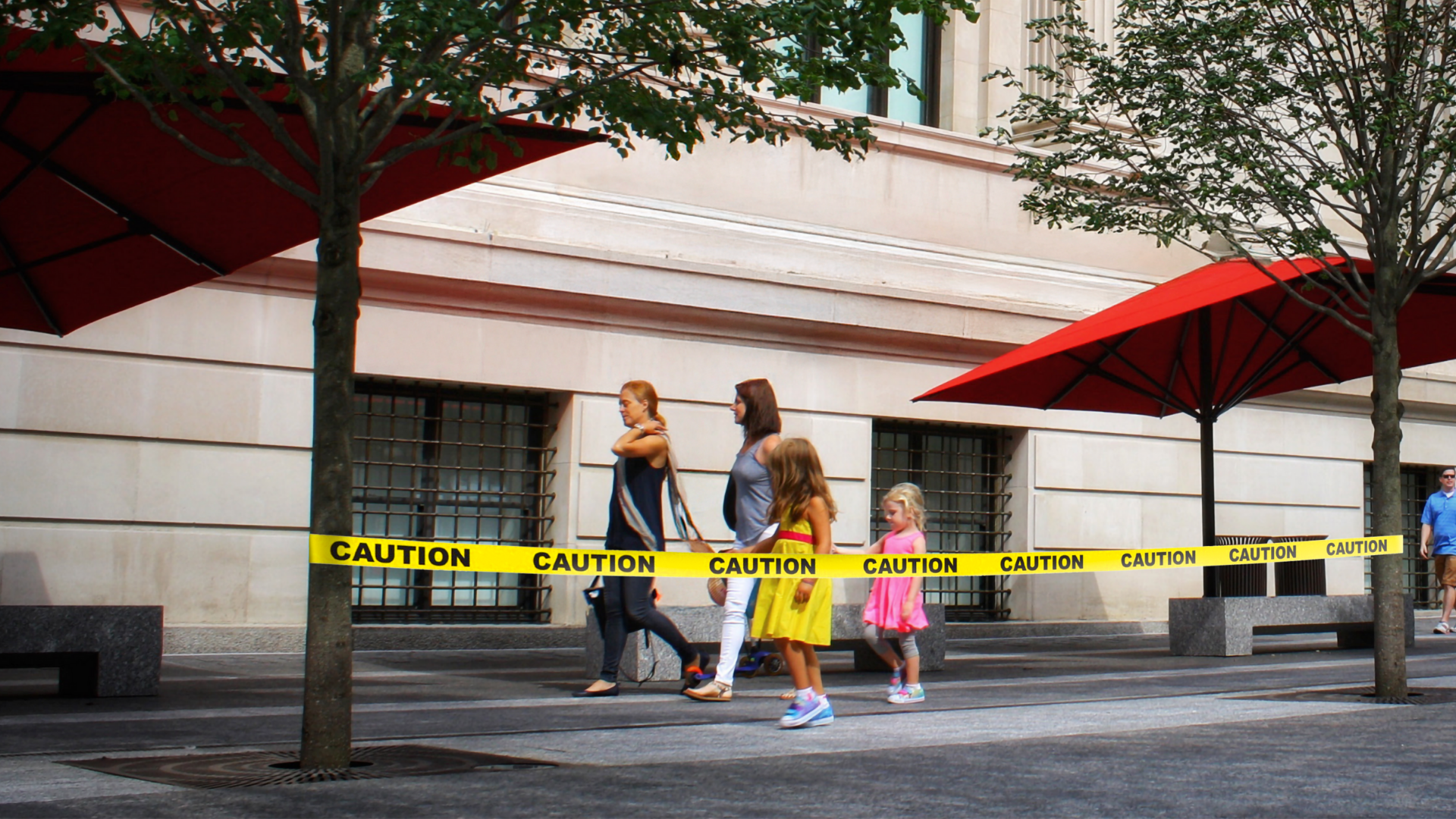
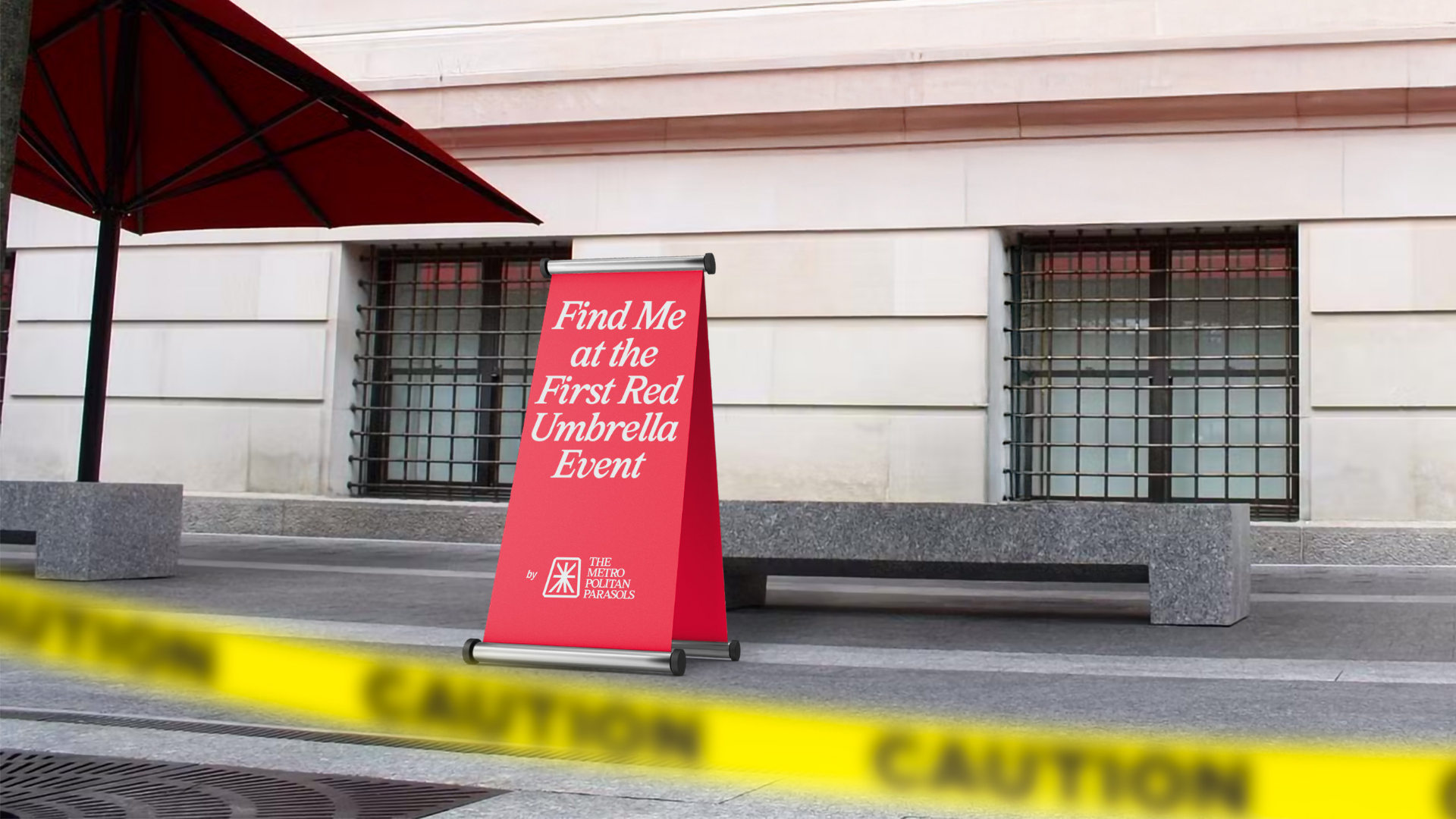
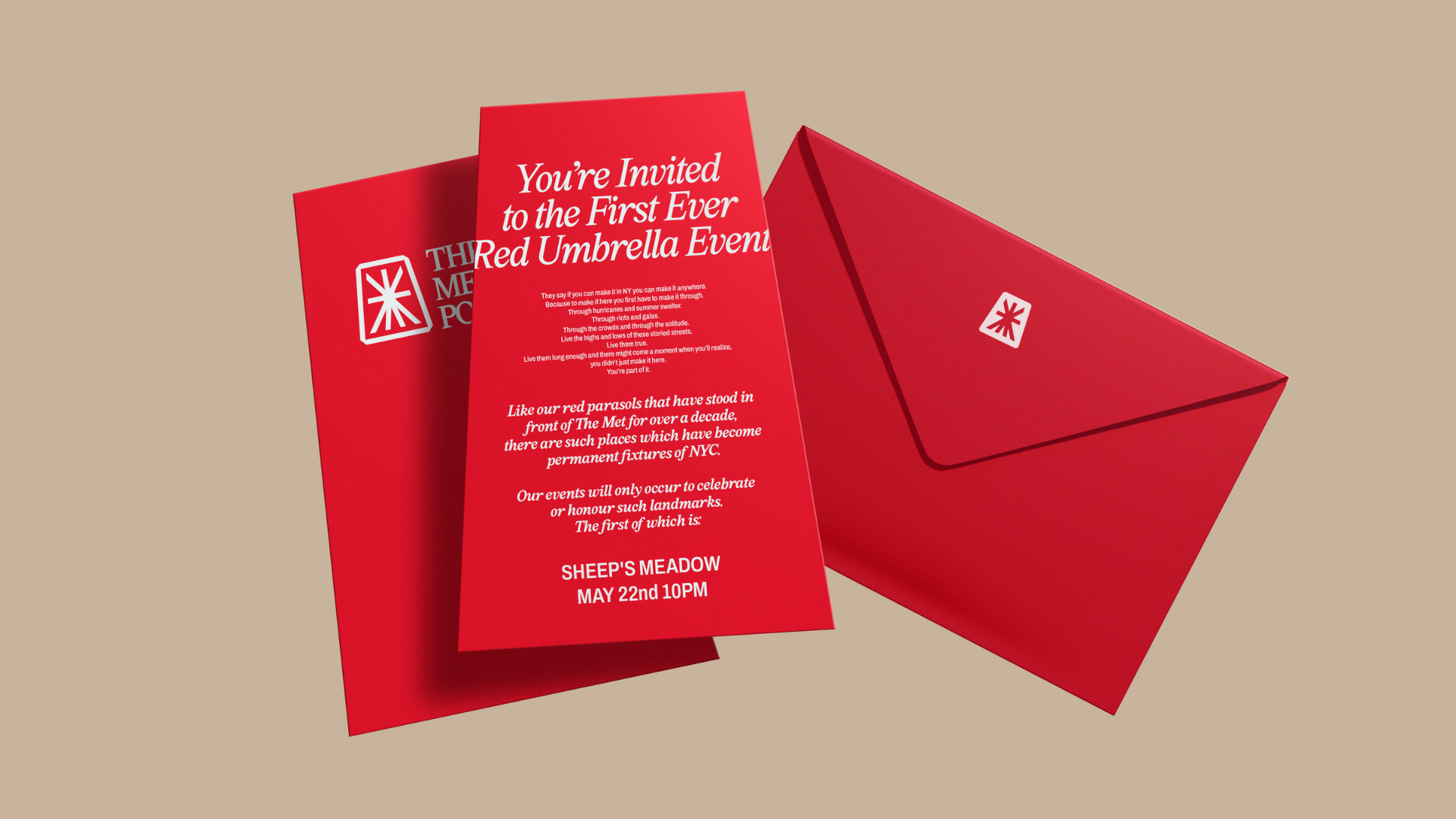
Ultimately, this project taught me that even in categories that feel static or unemotional, strategists can create energy, tell stories, and use cultural capital to build brands that sell more than just a product.
Navigated B2B world I knew nothing about: Through quant & qual, I got to know the right target audience in depth which helped me outline a path forward for my client.
Built a brand around what makes this product special: I leaned into their permanence, not just physically, but emotionally and culturally.
Turned unclaimed awareness into brand equity: People knew the red umbrellas outside the MET but no one knew the brand behind them. I helped connect the dots.
Art direction: Alex Ward


